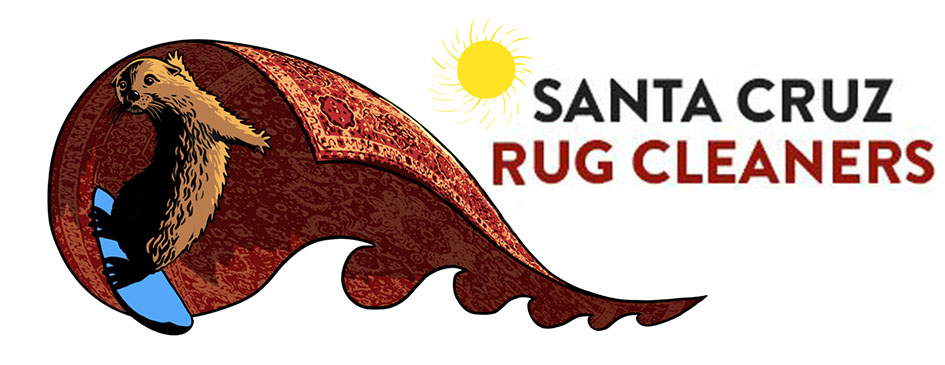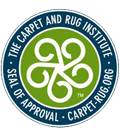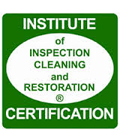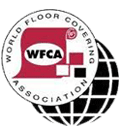Frequently Asked Questions
Santa Cruz's Oldest, Largest and Finest Name in Rug Cleaning Since 1947
FAQ Answered By Our Rug & Carpet Experts
Our customers often ask us about rug cleaning & restoration procedures, how to preserve the life span and value of rugs, etc. Here are some answers. We hope you find this info useful. If you don't find the response you're looking for, please don't hesitate to ask us about it, and we'd be happy to provide you with more info.
Oriental and other rugs should be vacuumed regularly, particularly in high-traffic areas. 80% of soil in rugs is dry particulate matter, which acts as sandpaper and accelerates wear if it is not removed. Thicker rugs that are not regularly vacuumed can become impacted with dry soil over time, making it difficult, if not impossible, to remove.
It is critical to immediately absorb as much of the liquid as possible. Apply a 50-50 solution of water and vinegar and blot do not rub the area with white tissue or white towels. Resist the temptation to use over-the-counter spot removers. Most are too aggressive and contain some type of bleach. Spotters applied directly to the rug can leave soap residue and cause rapid resoiling.
Periodic cleaning by a qualified professional rug cleaner removes the soil that dulls color and reduces the luster of wool. In addition, regular cleaning can prevent thorny problems such as moth infestations, which can seriously affect the beauty and value of a rug. Oriental and area rugs should be cleaned every one to five years, depending on their location and traffic, to maintain their appearance, condition and value.
Rugs should never be cleaned at your home unless there are extenuating circumstances, such as size or weight, that prohibit them from being transported to a plant for cleaning. This is generally not an issue when doing business with qualified, professional rug cleaners, who pick up and deliver rugs as part of their service. Home cleaning leaves soap and dirt residue in the rug that causes it to resoil quickly. Additionally, the fringe cannot be cleaned in-home, and inadequate drying may cause the rug to mildew.
The rug care industry is no different from other industries. The most qualified rug care specialists distinguish themselves by their experience, in-depth knowledge of rugs, technical excellence and customer service. Before having your rugs professionally cleaned, ask a few questions. How long has the company been in business, and how experienced is their staff? Do they have their own cleaning plant, or do they subcontract the work? Investing a few minutes to ask these and other questions can pay significant dividends.
There are three types of soils found on rugs and carpet. The first type involves spots, which can be removed and stains, which are often permanent. The second is unattached surface litter, such as gritty dirt tracked in by feet, pet hair, lint and the like. Gritty soil scratches and dulls fibers and should be vacuumed at least once a week to reduce damage and extend the life of the carpet. The third type of soil consists of sticky oil and greases containing tiny pieces of soil material that adhere to the fibers in rugs and carpets. Professional cleaning can remove this type of soil; however, the longer it is on the fibers, the more difficult it is to remove.
When some rugs are washed during the cleaning process, the dyes may weaken and bleed. There are many causes of dye bleeding in rugs. Some of them, such as defective dyes and dying methods and after-market painting, may not be apparent at the time of purchase. Other causes of bleeding dyes are pet urine, sunlight, certain fumes, common chemicals and over-the-counter spot removers.
Fringes are the Achilles heel of rugs because they deteriorate with normal foot traffic, vacuuming, cleaning, and other conditions. Because of their tenuous nature, fringes need to be replaced periodically.
Oriental rugs have variations in color because they are made by hand. Variations in surface color, knot density, pile height, shape and end finishes make hand-knotted rugs more interesting and spontaneous than those made by machine. One of the most common characteristics of Oriental rugs is the color variation known as abrash. These variations may appear as bands or horizontal bars and can vary from very subtle shade differences to distinct or even bold variations in certain colors of the rug. These distinct color variations are not defects but are characteristics of the many variables and dye lot differences that went into knotting the rug.
All rugs, from family heirlooms to estate sale finds to new purchases, need a protective rug pad. Rug pads minimize slippage, increase the life of the rug, make rugs feel thicker and more luxurious, and absorb noise.
Design is one of many components used to identify Oriental rugs. We identify rugs by technical analysis that includes the materials used to make the rug, method of construction, dyes and design.
Most Oriental rugs made after World War II, including those made today, will not appreciate in value. In fact, purchasers most likely paid more for some rugs in the 1950s, 1960s and 1970s than the rugs are worth today.
A rug's value depends on many things, including the type of rug, how and when it was made, its artistic merit and its condition. An old rug in poor condition is just an old rug; however, some old rugs are worth repairing to restore their beauty and usefulness.
The value of only a few Persian rugs, such as Nain, Isfahan and silk rugs, is partially determined by knot count. New, mass-produced rugs from China, India and Pakistan vary in quality and design. Generally speaking, when these rugs are new, they have more knots per square inch and a higher price per square foot.
Latex is an adhesive that anchors tufts to the primary backing, adds dimensional stability and attaches a secondary backing to the rug. Latex will commonly break down over time due to things like gases in the air, floor waxes, traffic and sunlight. This deterioration will appear as bubbles, powdery residue or backing separation.
White knots are caused by breaks in a rug's foundation when it is still on the loom. The breaks are spliced together by tying two knots at each end of the break. When the rug is new, the full length of the pile can obscure these white knots. Eventually, foot traffic as well as a thorough cleaning will reveal these knots. They should never be cut, which would create a weakness in the rug's foundation.






